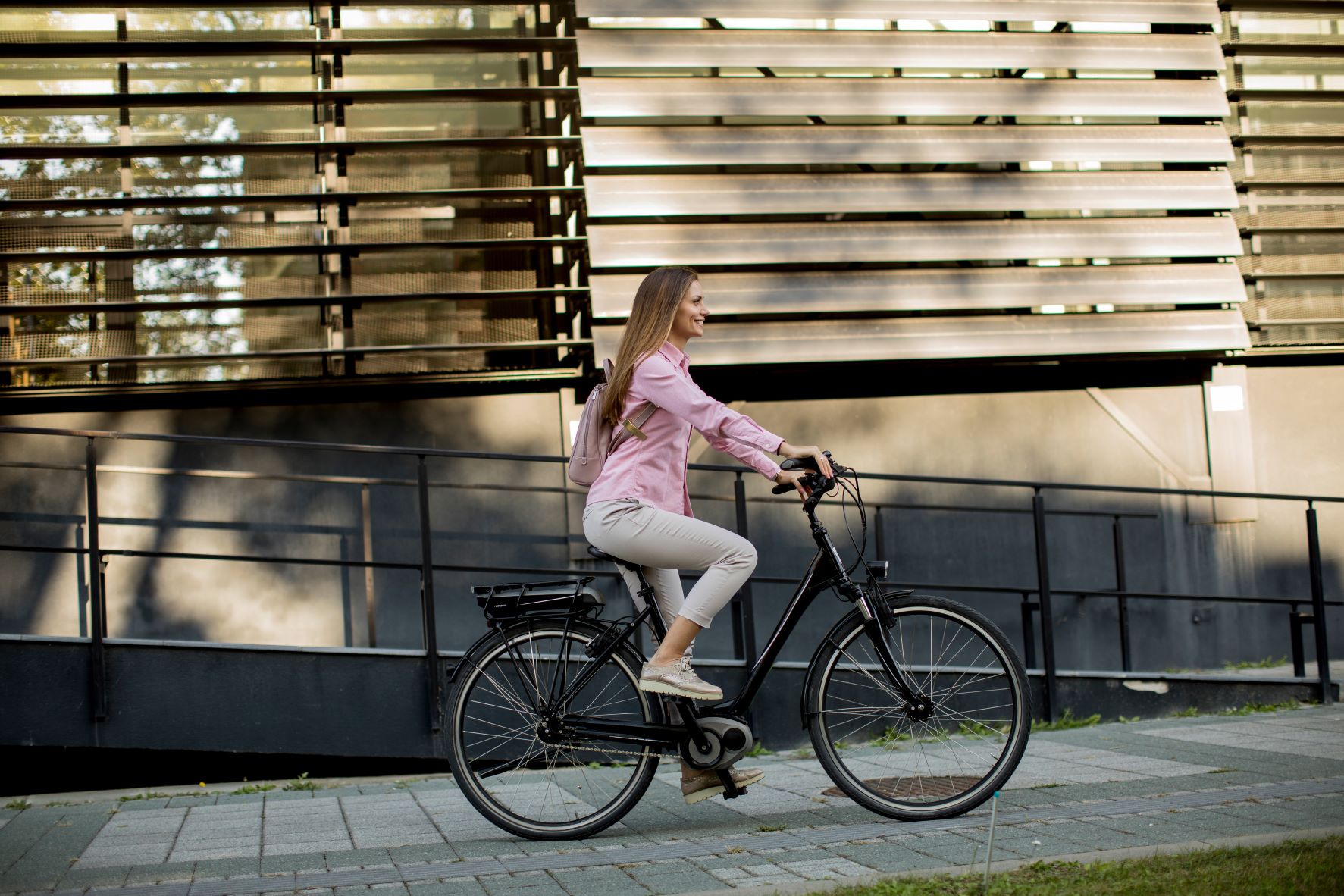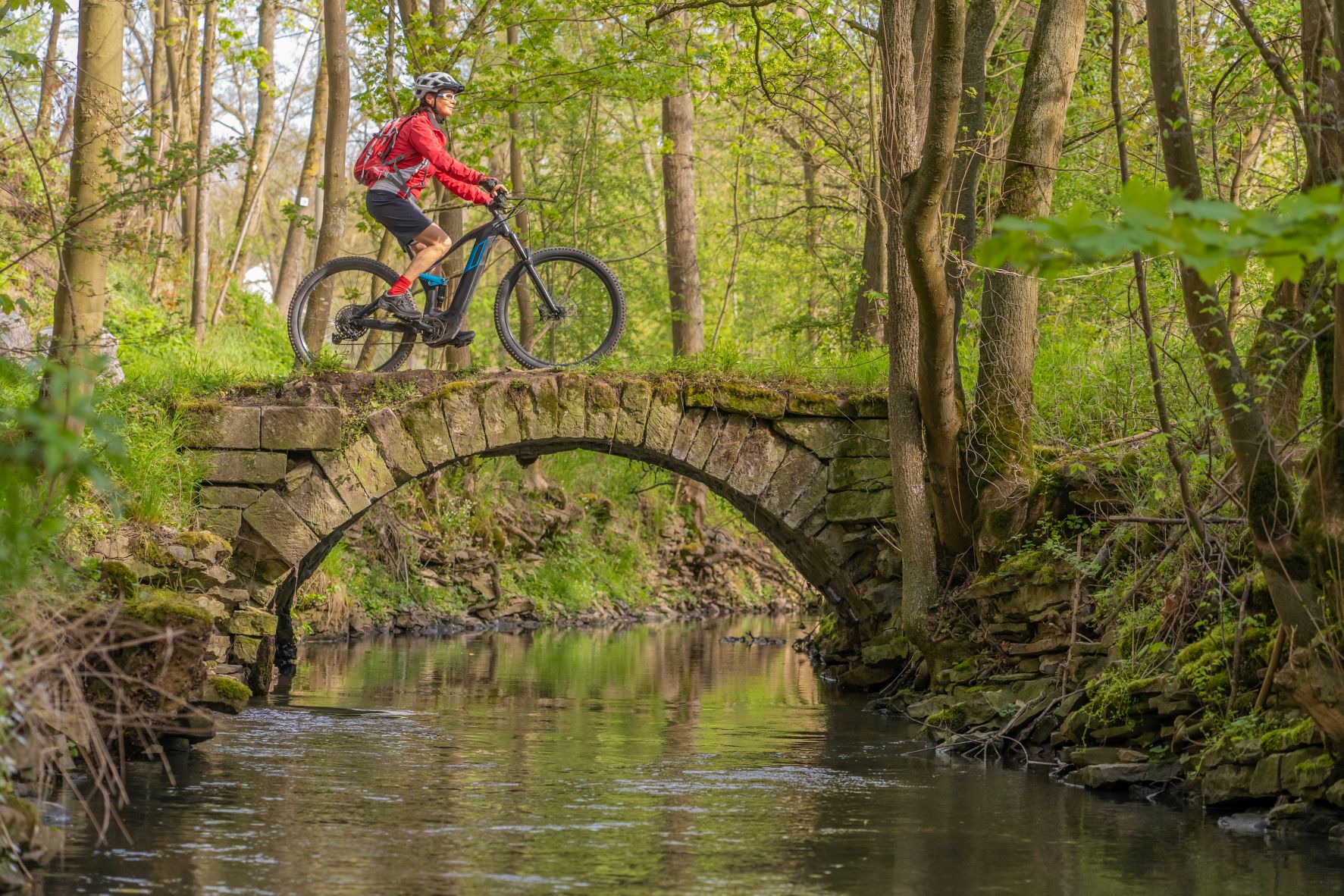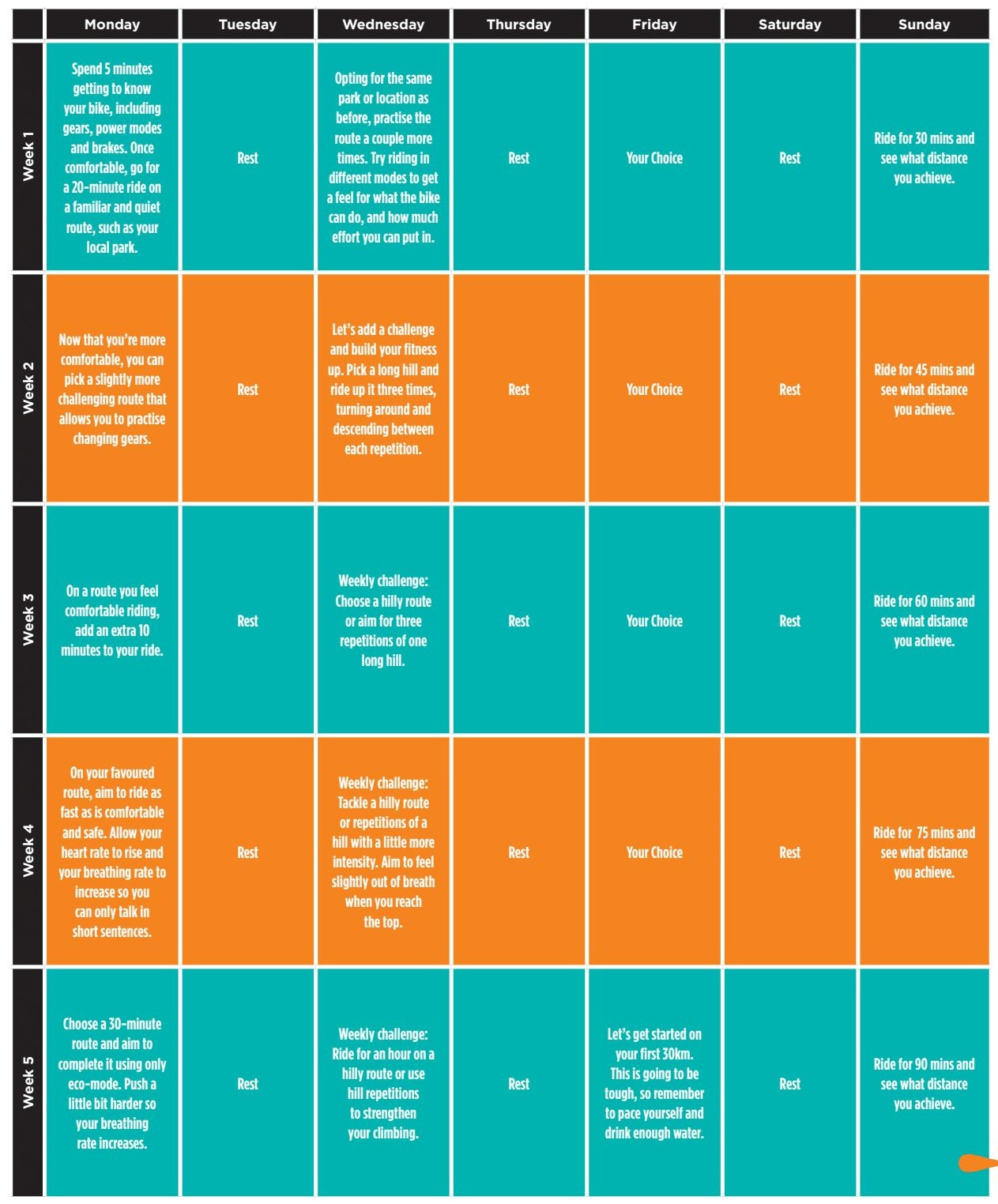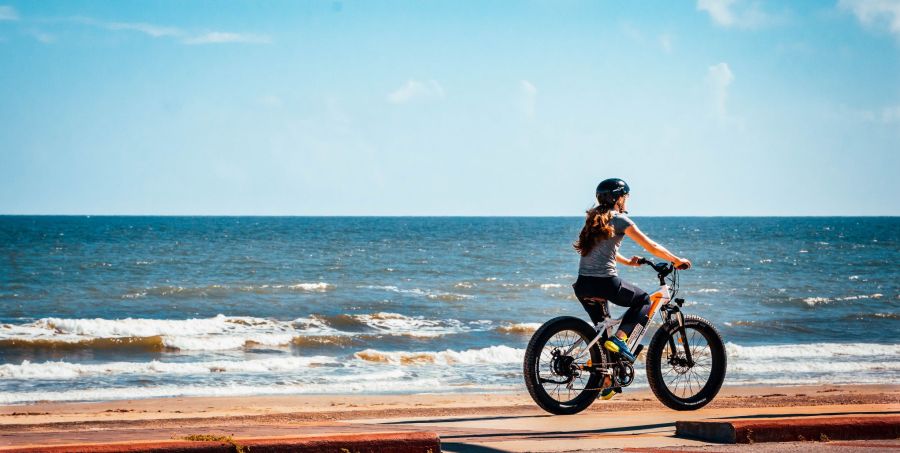Riding an electric bike can help you go further and faster than ever, meaning you can ditch the car to run errands on your own steam – but are e-bikes good for your fitness? We take a closer look at how to get fit on an e-bike…
Thinking about investing in an electric bike? You’re not alone. According to recent data from the Bicycle Association, sales of e-bikes enjoyed a 67 per cent increase in the UK following the Coronavirus pandemic. And this significant uptake is showing no signs of slowing down: a 2021 research study by Mintel predicted that the UK e-bike market – currently worth £280 million in sales – is set to triple over the next three years.
But just why are e-bikes booming? ‘E-biking encapsulates many of our current priorities, and it does so in away that is fun,’ says Natalie Creswick, a cycling and triathlon coach, and an ambassador for bicycle company Specialized. ‘It is a green transport option, it saves money when the cost of fuel is sky high, and it provides a great way to get fit. After being cooped up during the pandemic, it’s also a brilliant way to explore, get out in nature and improve your wellbeing.’
Kat Thomson, a spokesperson for bicycle company, Raleigh, couldn’t agree more: ‘Cycling is such a fantastic way to travel, and compared to traditional bikes, e-bikes boost your pedal power, so riders can go further and faster. The added electrical assistance makes cycling more accessible, and more able to fit it into a daily routine, whether you’re commuting, running errands, carrying heavier loads or trying to get fitter. Plus, e-bikes can help us take a step towards decarbonising our towns and cities – all without breaking a sweat if you don’t want to!’

Why choose an e-bike?
Aside from being good for your body, mind and the planet, the soaring popularity of e-bikes is being helped by the wider variety of bikes now available to suit different riding styles and preferences, alongside advancements in e-bike technology. ‘From city bikes and road bikes to mountain bikes and folding bikes, there’s literally an e-bike for your every need and whatever terrain you want to ride,’ explains Creswick.
‘And, with their cheaper, smaller and longer-lasting batteries, e-bikes are also lighter and go further. You still have to pedal an e-bike, but the electric boost means you can ride for longer over more challenging terrain, which opens up opportunities you might otherwise have thought impossible. It levels the playing field, because those with different fitness and experience levels can ride together and enjoy it. Equally, you can get fit without totally exhausting yourself if you don’t want to.’
Accessibility of e-bikes
Sounds amazing, but are e-bikes really suitable for everyone? Absolutely, says Thomson, who cites an e-bike’s ability to ‘turn a good journey into a great one’ as a key reason why people of all ages, fitness levels and riding styles can’t get enough of them.
‘E-bikes are a great way to break down barriers to cycling for those who are recovering from injury, looking to improve their fitness or wanting to start their cycling journey. Pedal as much or as little as you want, and the motor will assist you with the rest! The fact that you’re not reliant solely on your own effort means you know you’ll be able to get home with ease when you head out on your adventures.’
Fitness benefits of e-bikes
While e-bikes have been shown to provide fewer fat-burning benefits per mile than unpowered bikes (research published in the journal of Medicine & Science in Sports & Exercise estimates you can burn an average of 500 calories in 60 minutes on a regular bike, compared to 390 calories on an e-bike), studies have shown that e-bike users tend to end up with similar overall levels of physical activity because e-bike riders travel longer distances on average.
If you’re looking to get fitter, or are new to cycling, Creswick says that riding an e-bike can encourage you to cycle more regularly and for longer, so you can build up your fitness while building yourself-confidence on the bike at the same time. But will an e-bike be a waste of money for already-fit cyclists? Absolutely not, says Thomson, who argues the common myth that e-bikes don’t provide the rider with a workout is simply not true because it’s down to the rider to decide how much – or how little – assistance they use.
‘You might already be fit, but your bucket-list dream of cycling from Lands’ End to John O’Groats could feel unreachable,’ says Thomson. ‘However, an e-bike would make that dream a reality. And, if you’re already active, riding an e-bike would mean you can enjoy all the physical and mental health benefits of cycling while leaving you plenty of energy for your other sports and pastimes.’

5-week e-bike fitness training plan
This five-week beginner e-bike fitness plan from Specialized will help you build the fitness required for a 90-minute cycle…
Week 1
- Monday: Spend 5 minutes getting to know your bike, including gears, power modes and brakes. Once comfortable, go for a 20-minute ride on a familiar and quiet route, such as your local park
- Tuesday: Rest
- Wednesday: Opting for the same park or location as before, practise the route a couple more times. Try riding in different modes to get a feel for what the bike can do, and how much effort you can put in.
- Thursday: Rest
- Friday: Your choice
- Saturday: Rest
- Sunday: Ride for 30 mins and see what distance you achieve.
Week 2
- Monday: Now that you’re more comfortable, you can pick a slightly more challenging route that allows you to practise changing gears.
- Tuesday: Rest
- Wednesday: Let’s add a challenge and build your fitness up. Pick a long hill and ride up it three times, turning around and descending between each repetition.
- Thursday: Rest
- Friday: Your choice
- Saturday: Rest
- Sunday: Ride for 45 mins and see what distance you achieve.
Week 3
- Monday: On a route you feel comfortable riding, add an extra 10 minutes to your ride.
- Tuesday: Rest
- Wednesday: Weekly challenge – Choose a hilly route or aim for three repetitions of one long hill.
- Thursday: Rest
- Friday: Your choice
- Saturday: Rest
- Sunday: Ride for 60 mins and see what distance you achieve.
Week 4
- Monday: On your favoured route, aim to ride as fast as is comfortable and safe. Allow your heart rate to rise and your breathing rate to increase so you can only talk in short sentences.
- Tuesday: Rest
- Wednesday: Weekly challenge – Tackle a hilly route or repetitions of a hill with a little more intensity. Aim to feel slightly out of breath when you reach the top.
- Thursday: Rest
- Friday: Your choice
- Saturday: Rest
- Sunday: Ride for 75 mins and see what distance you achieve.
Week 5
- Monday: Choose a 30-minuteroute and aim to complete it using only eco-mode. Push a little bit harder so your breathing rate increases.
- Tuesday: Rest
- Wednesday: Weekly challenge – Ride for an hour on a hilly route or use hill repetitions to strengthen your climbing.
- Thursday: Rest
- Friday: Let’s get started on your first 30km.This is going to be tough, so remember to pace yourself and drink enough water
- Saturday: Rest
- Sunday: Ride for 90 mins and see what distance you achieve
Grab an easy to follow copy below:

Words: Joanna Ebsworth | Images: Shutterstock
Related content:








